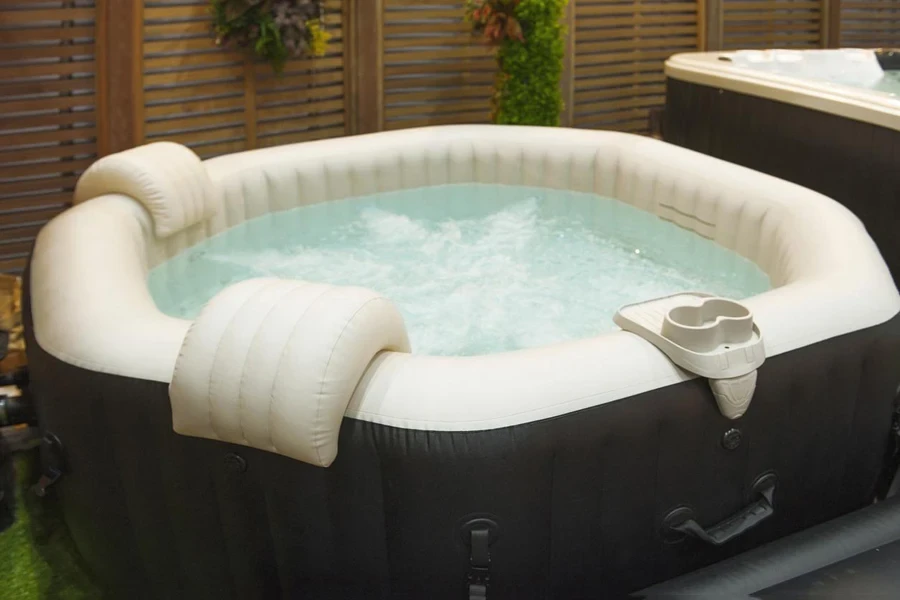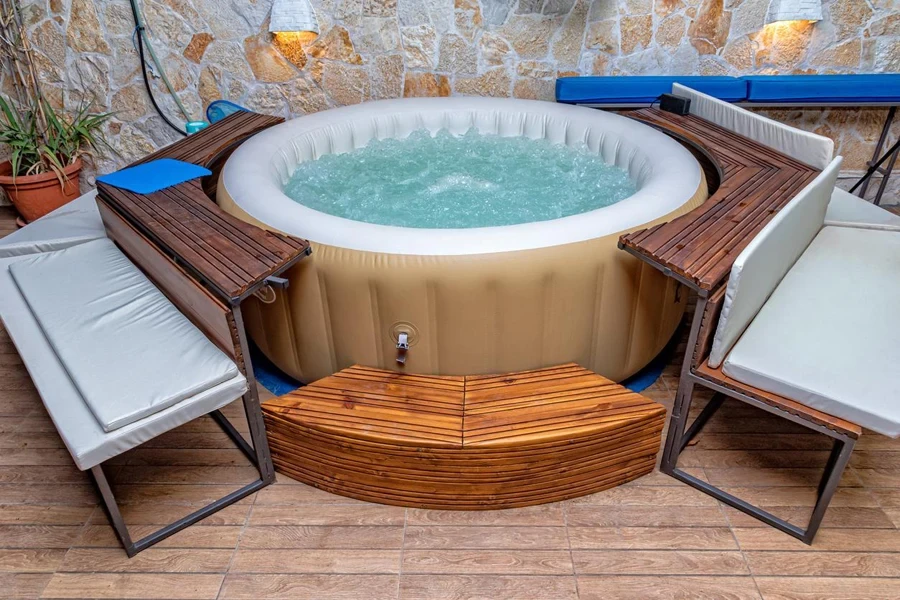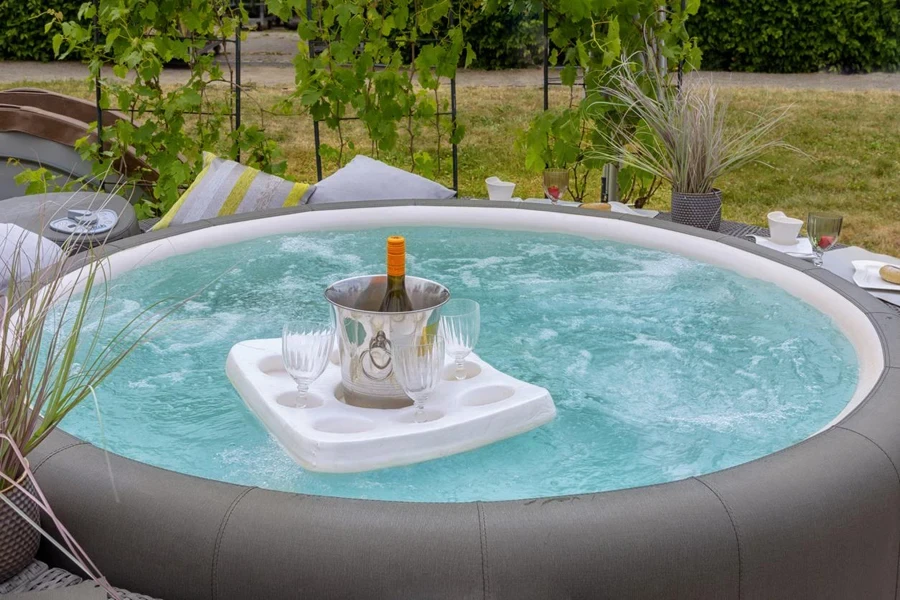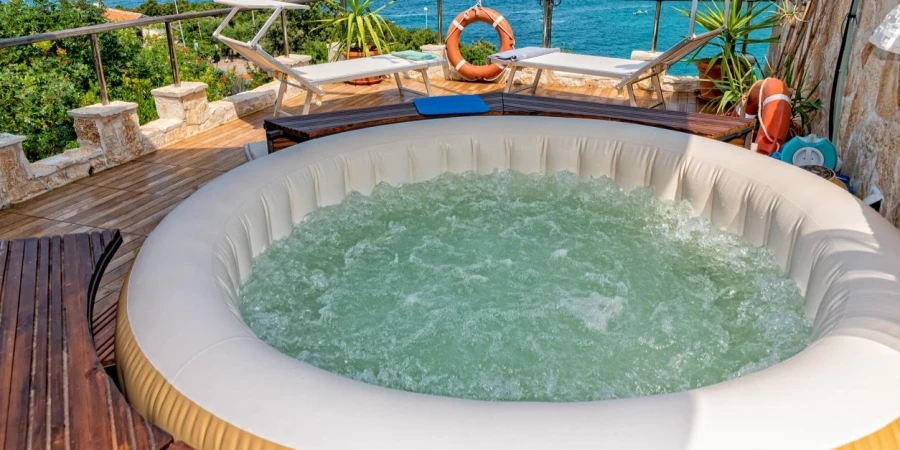In the world of home relaxation and wellness, inflatable hot tubs have emerged as a game-changing trend, offering a perfect blend of affordability, convenience, and luxury. As consumers increasingly seek accessible spa experiences, the inflatable hot tub market is witnessing unprecedented growth, reshaping the landscape of the bathing industry.
Table of Contents
● The Rise of Inflatable Hot Tubs in the Market
● The Economic Impact of Inflatable Hot Tubs on the Bathing Industry
● What’s Next for Inflatable Hot Tubs?
The Rise of Inflatable Hot Tubs in the Market
What Are Inflatable Hot Tubs?
Inflatable tubs, also known as portable hot tubs or blow-up spas, are a modern and versatile alternative to traditional fixed bathtubs. These innovative products are made from durable, puncture-resistant materials and can be easily inflated and deflated for convenient storage and transport. Inflatable tubs come in various sizes, shapes, and designs, catering to different consumer preferences and needs.
Why Are Inflatable Tubs Gaining Popularity?
The increasing popularity of inflatable tubs can be attributed to several factors. Firstly, they offer an affordable luxury experience, allowing consumers to enjoy the benefits of a spa-like soak without the high costs associated with traditional hot tubs. According to Verified Market Reports, the market size was valued at USD 1.4 Billion in 2023 and is projected to reach USD 2.8 Billion by the end of 2030, growing at a CAGR of 4% during the forecast period. This growth is driven by factors such as increasing consumer interest in home-based relaxation, a growing emphasis on wellness, and advancements in materials and technology.
The Appeal to Consumers: Affordability and Convenience
One of the primary reasons behind the growing demand for inflatable hot tubs is their cost-effectiveness compared to traditional hot tubs. According to Verified Market Reports, some inflatable models cost around $1,700 less than their permanent counterparts. This significant price difference has made the luxury of a hot tub accessible to a broader consumer base.
Moreover, the convenience factor plays a crucial role in the appeal of inflatable hot tubs. Their quick and easy setup process, coupled with their portability, allows users to enjoy a spa experience wherever they desire. As highlighted by National Assemblers, inflatable hot tubs offer a blend of “luxury, convenience, and relaxation that can suit any lifestyle or budget”.

The Economic Impact of Inflatable Hot Tubs on the Bathing Industry
Cost-Benefit Analysis for Consumers and Retailers
Inflatable tubs offer a cost-effective alternative to traditional fixed bathtubs and hot tubs, making them an attractive option for budget-conscious consumers. According to a survey by the Association of Pool & Spa Professionals, the average cost of an inflatable hot tub ranges from $500 to $1,500, significantly lower than the $3,000 to $10,000 price tag of a traditional fixed hot tub.
The affordability of inflatable hot tubs has not only benefited consumers but has also opened up new opportunities for retailers. The lower price point has made it easier for retailers to stock and sell these products, catering to a wider customer base. Additionally, the portability and easy storage of inflatable hot tubs have made them an attractive option for consumers with limited space or those who frequently relocate.
How Inflatable Hot Tubs Are Changing the Way We Approach Bathrooms
The rise of inflatable hot tubs is reshaping the way consumers approach their bathroom and outdoor relaxation spaces. With the ability to set up a hot tub virtually anywhere, people are no longer limited by the constraints of permanent installations. This flexibility has led to a shift in how homeowners design and utilize their spaces, with many opting for more versatile and adaptable solutions.
Traditional Hot Tubs vs. Inflatable Alternatives
While traditional fixed bathtubs have been a staple in homes for decades, inflatable tubs offer several advantages that make them an attractive alternative. Inflatable tubs are more affordable, easier to install and maintain, and offer greater flexibility in terms of placement and storage. They also provide a unique and enjoyable soaking experience, with features such as built-in jets, LED lighting, and temperature control. However, traditional tubs still hold appeal for their durability, aesthetic value, and potential to increase home resale value.

What’s Next for Inflatable Hot Tubs?
Innovations in Inflatable Hot Tub Design and Features
As the inflatable tubs market continues to grow, manufacturers are investing in research and development to introduce innovative designs and features. Some of the latest trends in inflatable tub innovation include:
- Energy-efficient heating systems
- Advanced filtration and water treatment technologies
- Customizable jet configurations for targeted hydrotherapy
- Integrated audio and lighting systems for an immersive spa experience
- Smart connectivity features for remote control and monitoring
These innovations aim to enhance the user experience, improve energy efficiency, and provide added convenience and customization options for consumers.
The Role of Technology in Inflatable Hot Tub Innovation
Technology plays a crucial role in driving innovation in the inflatable tubs industry. Manufacturers are leveraging advanced materials science, engineering, and digital technologies to create smarter, more efficient, and feature-rich products. For example, the integration of IoT (Internet of Things) technology allows users to control and monitor their inflatable tubs remotely using smartphones or voice-activated devices. As technology continues to advance, we can expect to see even more sophisticated and feature-rich inflatable hot tubs in the future.

Future Trends: What’s Next for the Inflatable Hot Tubs Industry?
As the inflatable tubs industry continues to evolve, several key trends are expected to shape its future:
- Eco-friendly and sustainable materials: Consumers are increasingly conscious of the environmental impact of their purchases. Manufacturers are responding by developing inflatable tubs made from recycled and biodegradable materials, reducing their carbon footprint and appealing to eco-conscious buyers.
- Health and wellness focus: The growing emphasis on self-care and wellness is driving demand for inflatable tubs that offer therapeutic benefits. Manufacturers are incorporating features such as chromotherapy, aromatherapy, and massage jets to create a holistic spa experience.
- Customization and personalization: Consumers are seeking products that cater to their unique preferences and needs. Inflatable tub manufacturers are offering a wide range of customization options, from color and design to jet configuration and accessories, allowing users to create a personalized soaking experience.
- Integration with smart home systems: As smart home technology becomes more prevalent, inflatable tubs are expected to seamlessly integrate with existing smart home ecosystems. This integration will enable users to control their tubs using voice commands, automate maintenance tasks, and receive real-time alerts and notifications.
Conclusion
Inflatable hot tubs have revolutionized the bathing industry, offering consumers an accessible and convenient way to enjoy the luxury of a spa experience. With their affordability, portability, and ever-improving features, these products have captured the attention of a growing market. As the industry continues to evolve, we can expect to see even more innovative and technologically advanced inflatable hot tubs that cater to the diverse needs and preferences of consumers seeking affordable luxury and relaxation.




